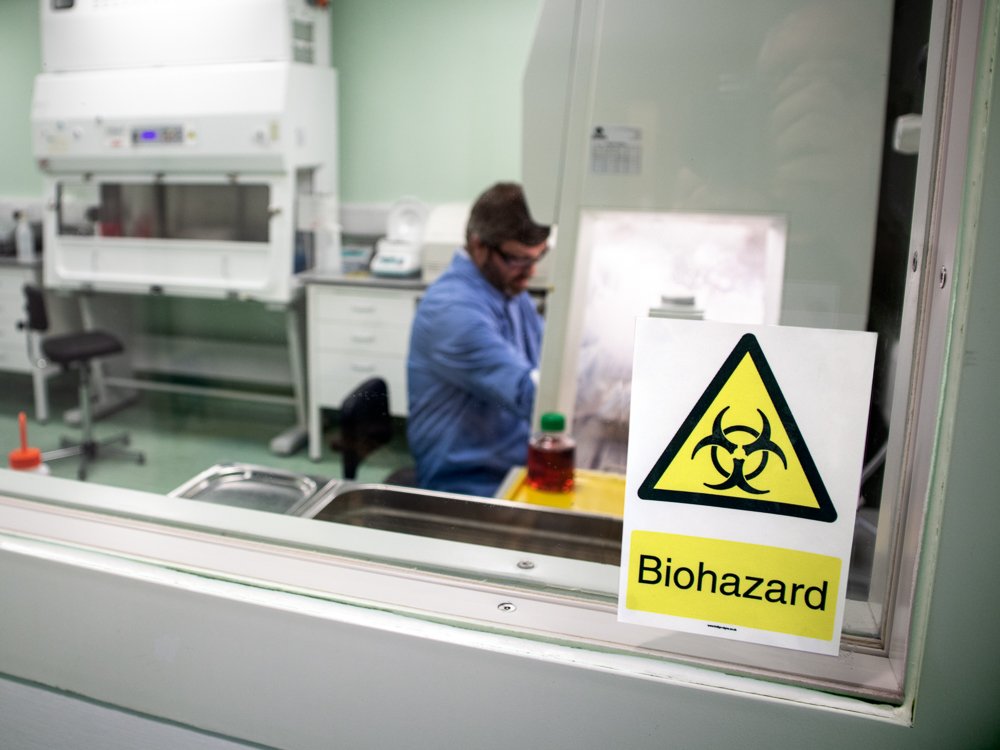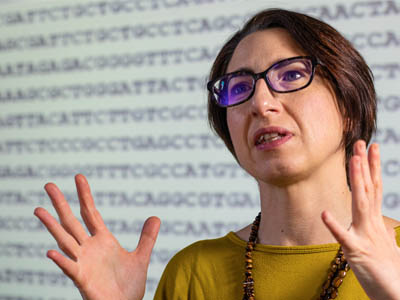Buildings and Facilities
BSRC researchers work in a complex of purpose-built specialist laboratories on the North Haugh campus of the University of St Andrews. These laboratories include those in the School of Medicine (2010; £45M), the Biomolecular Sciences Annexe (2008; £13M), the Willie Russell Laboratories (2019; £9M), and the recently refurbished Biomolecular Sciences building.
These buildings house the specialist facilities that underpin the interdisciplinary research in the BSRC.

Mass spectroscopy
The BSRC Mass Spectrometry and Proteomics Core Facility offer a wide range of support for research projects, both within the university and the wider academic community. The facility has five mass spectrometers (ThermoScientific Orbitrap Fusion Lumos with Ultimate 3000 Nano LC and Vanquish standard LC, Sciex TripleTOF 5600+ with Eksigent 2D Ultra Nano LC, Waters Xevo G2TOF, Sciex 4800 MALDI MS and MSMS, ThermoScientific LCQ Fleet instrument with Ultimate 3000 LC) with three co-located research instruments (Sciex Qtrap 4000, Thermo VelosPro with LCMS, Thermo Exactive). Full support service is provided, including experimental design, analysis and data interpretation.
The Chemistry Mass Spectrometry Accurate mass service offers mass spectrometry measurements to within 5ppm on the following instruments. Samples are by submission to the service only. Please contact Caroline Horsburgh for enquiries ([email protected]).
- Thermo Exactive Orbitrap mass spectrometer. Ionisation techniques available are ESI (pos and neg) APcI (pos and neg) ASAP (pos).
- Micromass GCT mass spectrometer with solids probe. Ionisation techniques available are EI and CI.

High containment laboratories
The BSRC has two high-containment laboratory suites with all the necessary facilities to work with ACDP level 3 pathogens, including animal and human pathogenic parasites, viruses and bacteria. These laboratories provide state of the art protection for the workers using them and include through-the-wall autoclaves for the inactivation of hazardous biological material.

Structural Biology
Fundamental studies of the function and mechanism of proteins often require detailed knowledge of their structure. The X-ray facility in the BSRC houses a Rigaku MM007HFM with ACTOR robot and CCD detectors for automated screening of protein crystals before data collection at synchrotron sources, and for in-house data collection. The facility also provides users with an ARI Scorpion for screen preparation and an ARI Gryphon for nano-drop dispensing.
The department also has access to six nuclear magnetic resonance spectrometers for NMR spectroscopy of samples in solution. This includes the Bruker AV-III HD 700, equipped with a nitrogen-cooled Prodigy cryoprobe with inverse triple resonance geometry (TXI).
As well as a cryo-EM.

Bioinformatics
BSRC researchers benefit from bioinformatics support from StABU (the St Andrews Bioinformatics Unit) located within the School of Medicine. StABU provides support and training for genome-wide association studies, next-generation sequencing analysis – genomic and functional genomic approaches – and the computational tools that underpin this analysis. A dedicated cluster supports more than 150 applications and provides storage solutions.

Biophysics
The BSRC Biophysics suite gives users access to a range of instrumentation to help in understanding their specific biological systems. The suite hosts a Biacore T200 SPR, a Malvern MicroCal PEAQ-ITC, a Malvern MicroCal VP-ITC, an Applied Photophysics Stopped-Flow spectrometer and a BioLogic MOS-500 CD spectrometer. The BSRC also has a Bruker EMX continuous-wave X-band EPR spectrometer and an E580 pulse X-band EPR spectrometer with ELDOR capability and has regular access to world-leading Q- and W-band pulse EPR instrumentation in the School of Physics and Astronomy.

Microscopy
The BSRC imaging suite gives users access to a range of microscope systems. The suite hosts a Zeiss LSM 800 Airyscan confocal microscope which allows moderate super-resolution imaging. Moreover, it accommodates a Leica SP8 confocal microscope and a Deltavision Epifluorescence system, providing various capabilities to image fluorescent samples as well as performing advanced fluorescence techniques, such as FRAP, FLIM and FRET.

Single Cell Sequencing Platform
The Single Cell Sequencing Platform is housed within the Biomolecular Sciences building in the BSRC. This sequencing platform can provide users with a wide range of sequencing applications, including whole genome, RNAseq, metagenomic, ATAC, and single cell. The platform is funded by UKRI BBSRC and comprises a Chromium X device, 4200 TapeStation, and Illumina NextSeq 1000.
